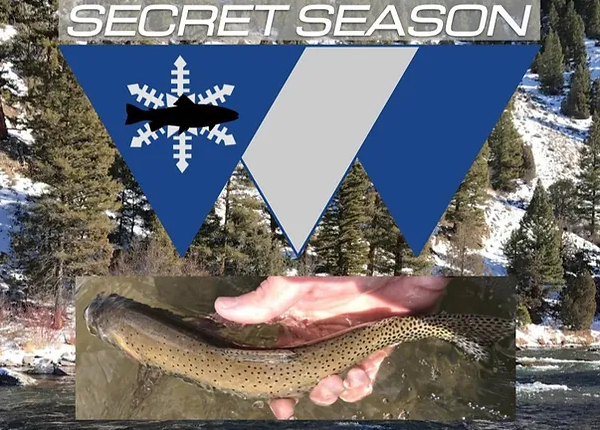Winter Trout Tips: Misconceptions
Fly fishing winter: Let's look at some winter fly fishing misconceptions and the differences in approach

January 2020
This week we're celebrating our anniversary. We've been writing articles since 2016, RIP duewestanglers.blogspot! To celebrate, let's take a look back at our own misconceptions about winter nymphing and correct some assumptions that we used to rely on, maybe by revisiting our past we can adapt our tactics for winter success.
2016
I was out this last weekend fishing a heavily fished tailwater and the fish were acting pickier than usual. Nymphing a double rig with a split shot and indicator didn't move any fish. That's not exactly correct, the fish would see the rig drop into the water and if the indicator was anywhere over their head the fish, they would slide delicately out of the path of my drifting flies. Those fish knew what to look for and weren't humoring my antics. After several more failed attempts, I made a change that ultimately led to catching a few nice rainbows. How?
- I changed to a New Zealand wool indicator setup. The logic being, it wouldn’t cause any disturbance when my rig lands, and choosing white wool is less unnatural looking than a bright colored indicator. A dry-dropper would be another option for a similar presentation, where the dry would solely function as an indicator. Wintertime Chubby Chernobyl anyone?
- I decreased fly size to eliminate the need for excessive split shot. This also eliminates surface disturbances when the rig lands, and smaller bead-head flies will sink quickly without any added weight.
- Fluorocarbon baby. You're going for full stealth mode.
2020
Good times, back in January 2016. I thought the rules were so black and white back then, but with time, a more nuanced approach to winter fishing has emerged. How did the earlier tips hold up?
- Let's start with the indicator. I used to think the Thingamabobber was the kiss of death. Then I repeatedly watched my buddy vacuum up fish nymphing under a larger indicator. Even in winter. Time after time. The brilliance in his approach is that he has confidence in his approach. He knows what a strike looks like, even a tiny one, and in winter you better believe they can be subtle. He also plays into his strengths. A big bobber isn't great over shallow water trout as I described above, but if you target the deeper holding water you won't run the same risk of spooking fish. I've gotten frustrated with light indicators, when heavy weight leads to the indicator drowning under the weight of the split shot, making it harder to see strikes. But switching to an AirLock or Thingamabobber will hold up the weight better and clarify strikes. It really provides a boost of confidence watching your indicator track along the surface consistently, knowing you’re getting a good drift. On some winter days, you may only get a few chances, so clear strike detection could define your success.
- Decreasing fly size to reduce surface resistance. Ya maybe in shallow situations. How about this, decreasing fly size between late Nov-late Feb, always. If the reports say 20-22s, come with 22-24s. Outside of a hatch, most of the bugs are immature during the winter, and still small. Plus, people try to get away with the biggest flies they can, so when it's picky time, smaller than what everyone else is throwing can be an asset. That is unless you seine the river to confirm actual insect sizes. But if you go too small you run the risk of bending out hooks, so I again rely on confidence over dropping to smaller flies.
- Fluorocarbon. Can’t live with it, can’t live without it. I do think that fluorocarbon line is helpful in technical situations. BUT, I still find my splitshot losing its grip within a dozen casts. So now I've started tying a backing barrel to keep them from sliding around. I usually use a line size thicker than the tippet. I've also experimented with dropshotting, and even reverting to monofilament tippet (Gasp!).

We're always learning, and hopefully improving. As I've aged as an angler I've started to realize:
Who cares what the "right" way is: if it works, keep testing it. If it keeps working, it is the right way.
We hope everyone's 2020 fishing season exceeds expectations. This year we're branching out into some new fly fishing styles, so tune back in to see what we're up to!



